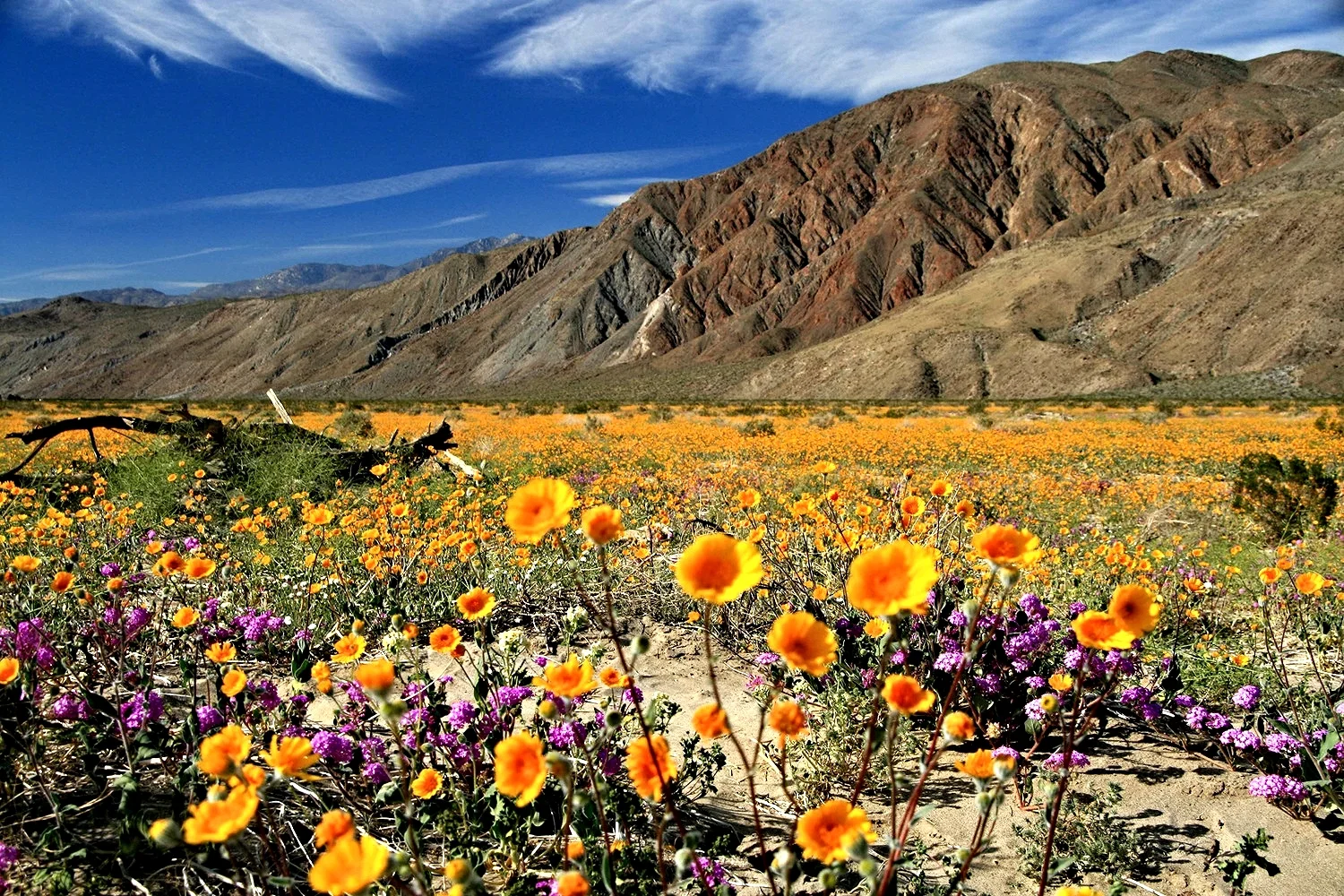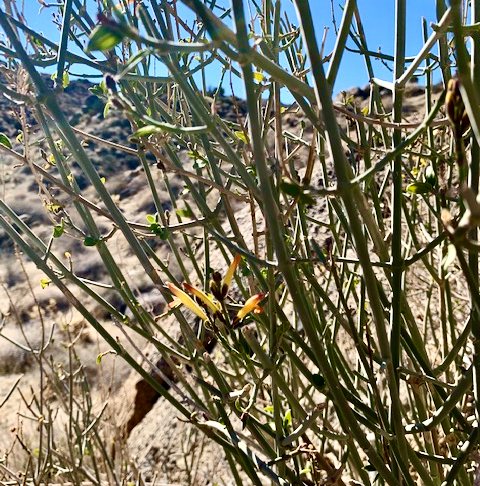/
PREVIOUS BOTANY SOCIETY EVENTS - 2022
STUDY TRIPS 2 AND 3 YIELD SURPRISES
For Session #2 on December 20th, nine of us ventured forth to explore Glorietta Canyon. Remember when, for this time of the year, the walls of the canyon would be covered with beautiful brittlebush (Encelia farinosa) growing their large winter leaves and preparing to bloom in late February? Not this year. We recall Naturalist Paul Johnson telling us that perennials and small shrubs “give up” after three years of drought, and that seems to be happening all over our desert.
One group surveyed the washes between where the hazardous rocks in the road are and the trailhead, and another group surveyed a higher area to the south. We found 29 living species out of the 196 that Naturalist Tom Chester and his crew have identified in that area. Most of these were found along washes where you would expect them to find them, where what little water we have received this year (less than an inch) could support life. The list includes: lavender (Hyptis emoryi) , chuparosa (Justicia californica), cheesebush (Ambrosia salsola var. salsola), burrowweed (Ambrosia dumosa), trixis (Trixis californica var. californica), ditaxis (Ditaxis sp.), indigo (Psorothamnus schottii), catclaw (Senegalia greggii), ocotillo (Fouquieria splendens ssp. Splendens), rhatany (Krameria sp.), mallow (Sphaeralcea ambigua var. ambigua), jojoba (Simmondsia chinensis), agave (Agave deserti var. deserti), barrel cactus (Ferocactus cylindraceus), hedgehog cactus (Echinocereus engelmannii), and several types of cholla.
Avenia compacta
Photo: Arie Korporaal
Three plants really got our attention. Avenia compacta is so rare that it does not have a common name. See Arie Korporaal’s photo of the plant in bloom! What a treat!
The second was Mammalaria dioica, a cactus that hides behind a rock or even another plant. We decided that it was difficult to distinguish nonflowering M. dioica from M. tetrancistra even after reading about them in Jon Rebman’s book Baja California Field Guide. The third was a plant familiar to all of you: desert trumpet (Eriogonum inflatum) (see Arie’s photo). None of the plants had the characteristic inflated stem. All in all a successful search.
Chuparosa sp.
Photo: Judy Kemp
For session #3 on January 3rd, one of the coldest days of the winter, eight intrepid botanists visited the upper side canyon of Plum Canyon. This small canyon is one of the favorites of the Botany group because it holds many of our desert plants plus a few high elevation ones. We did not expect to see so much life. Two of our challenges were: would there be any evidence of annuals sprouting and would we find the elusive yellow chuparosa? The answer to both is a resounding YES! A hint of green was clearly evident under the large shrubs near the main parking area. The largest seedling was, as you might guess, a Sahara mustard plant; and was is the right word as Pam Blake removed it. The question now is whether the seedlings will survive the next few weeks with no rain predicted. The second challenge was met near the end of our survey when Judy Kemp climbed up a small ridge and photographed the yellow blooming chuparosa. See Judy Kemp’s photo of the emerging chuparosa bloom.
Euphorbia eriantha)
Photo: Arie Korporaal
Another plant, this one an annual herb, was a first for many of us. This annual is known as Beetle Spurge (Euphorbia eriantha). (See photo.) The plant, while native to our southwestern deserts, was one several of us could not remember ever having seen.
Thirty species were identified. The canyon is known for its cactus collection – all five forms can be seen. Both species of Ephedra were found. Several high elevation trees – apricot and juniper – were alive, as was one white sage. One surprise was a trio of what looked like Dudleya.
We look forward to future trips!
Joanne Ingwall and Arie Korporaal



